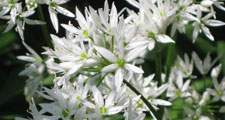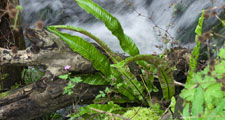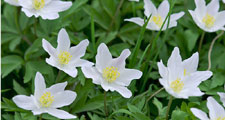Ancient Woodland Indicator Species
Species indicative of ancient woodland found in County Durham include:
Herbaceous Plants
- Barren strawberry – Potentilla sterilis
- Bluebell – Hyacinthoides no-scriptus
- Bugle – Ajuga reptans
- Common cow-wheat – Melampyrum pratense
- Common dog violet – Viola reichenbachiana
- Dog’s Mercury – Mercurialis perennis
- Early purple orchid – Orchis mascula
- Enchanter’s nightshade – Circaea lutetiana
- Goldilocks buttercup – Ranunculus auricomus
- Great bell flower – Campanula latifolia
- Heath bedstraw – Galium saxatile
- Herb paris – Paris quadrifolia
- Herb-robert – Geranium robertianum
- Lords-and-ladies – Arum maculatum
- Moschatel – Adoxa moschatellina
- Pignut – Conopodium majus
- Primrose – Primula vulgaris
- Ramsons – Allium ursinum
- Sanicle – Sanicula europaea
- Small cow-wheat – Melampyrum sylvaticum
- Sweet violet – Viola odorata
- Toothwort – Lathraea squamaria
- Tormentil – Potentilla erecta
- Wild strawberry – Fragaria vesca
- Wood anemone – Anemone nemorosa
- Wood Avens – Geum urbanum
- Wood horsetail – Equisetum sylvaticum
- Wood sage – Teucrium scorodonia
- Wood sorrel – Oxalis acetosella
- Wood speedwell – Veronica montana
- Wood spurge – Euphorbia amygdaloides
- Woodruff – Galium odoratum
- Yellow archangel – Lamiastrum galeobdolon
- Yellow pimpernel – Lysimachia nemorum
Grasses
- Giant fescue – Festuca gigantea
- Hairy brome – Bromus ramosus
- Wood false-brome – Brachypodium sylvaticum
- Wood meadow-grass – Poa nemoralis
- Wood melick – Melica uniflora
- Wood millet – Millium effusum
Rushes and Sedges
- Greater woodrush – Luzula sylvatica
- Hairy woodrush – Luzula pilosa
- Wood sedge – Carex sylvatica
Ferns and Horsetails
- Broad buckler fern – Dryopteris dilatata
- Hard fern – Blechnum spicant
- Hard shield fern – Polystichum aculeatum
- Hart’s tongue – Asplenium scolopendrium
- Lady fern – Athyrium filix-femina
- Male fern – Dryopteris filix-mas
- Narrow buckler fern – Dryopteris carthusiana
- Scaly male-fern – Dryopteris affinis
- Soft shield fern – Polystichum settiferum
- Wood horsetail – Equisetum sylvaticum



